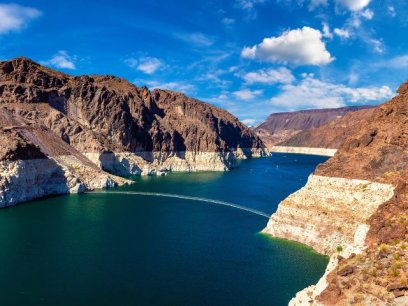
Did you know?
- Globally, net emissions of greenhouse gases from human activities increased by 35% from 1990 to 2010.
- In the US, greenhouse gas emissions from human activities increased by 7% from 1990 to 2014.
Similar to ghosts, greenhouse gases (GHGs) are invisible and are remnants of previous living things. In the US, the burning of fossil fuels—formed from prehistoric plants and animals—for electricity, heat, and transportation is the largest source of GHG emissions from human activities. These heat trapping gases are the most significant driver of an observed changing climate since the mid-20th century.
Carbon dioxide (CO2) accounts for most of the nation's GHG emissions, about 82% in 2013. Other principal GHGs include methane (CH4), nitrous oxide (N2O), fluorinated gases (HFCs, PFCs, SF6), and water vapor.
The concentrations of GHGs in the atmosphere have increased since the beginning of the industrial era, which is almost all due to human activities. Historical measures of these gases show that their current global atmospheric concentrations are unprecedented compared with the past 800,000 years, even after accounting for natural fluctuations. The largest source of GHG emissions in the US is electricity, followed by transportation.
A few examples of how the emission of these heat trapping gases into the atmosphere impacts our climate are increased air and ocean temperatures, changes in precipitation, sharp decline in Arctic sea ice, rising sea levels, longer wildfire seasons, and more intense storms. These changes in our climate not only impact the distribution of land and marine animals but also human health.
Learn More
- Discover more about the principal GHGs and their sources.
What you can do
- Discover small changes that you can make at home and in the yard, at the office, on the road, and at school to reduce GHG pollution and save money.
- Use the EPA's Household Carbon Footprint Calculator to discover where you can most effectively take actions to reduce your GHG emissions.
Sources
- DOE. 2013. "How Fossil Fuels were Formed." Accessed October 24. https://web.archive.org/web/20160416230652/http://www.fe.doe.gov/education/energylessons/coal/gen_howformed.html
- EPA. 2016. "Climate Change Indicators: Greenhouse Gases." Accessed October 24. https://www.epa.gov/climate-indicators/greenhouse-gases
- EPA. 2016. "Sources of Greenhouse Gas Emissions." Accessed October 24. https://www.epa.gov/ghgemissions/sources-greenhouse-gas-emissions
- EPA. 2016. "U.S. Greenhouse Gas Inventory Report: 1990-2014." Accessed October 24. https://www.epa.gov/ghgemissions/us-greenhouse-gas-inventory-report-199…;
- NCA. 2014. "Intruduction to Our Changing Climate." Accessed October 24. http://nca2014.globalchange.gov/report/our-changing-climate/introduction


